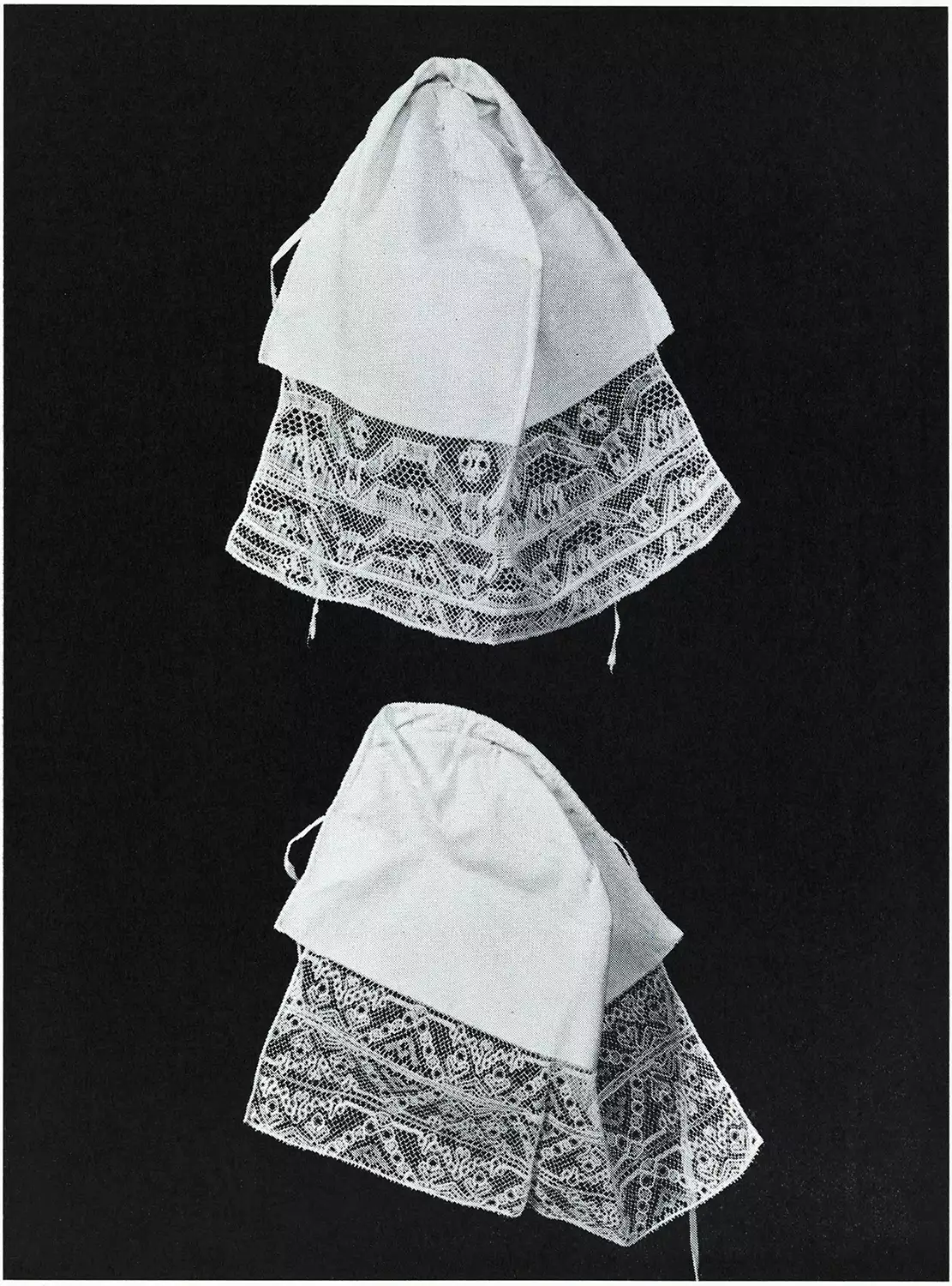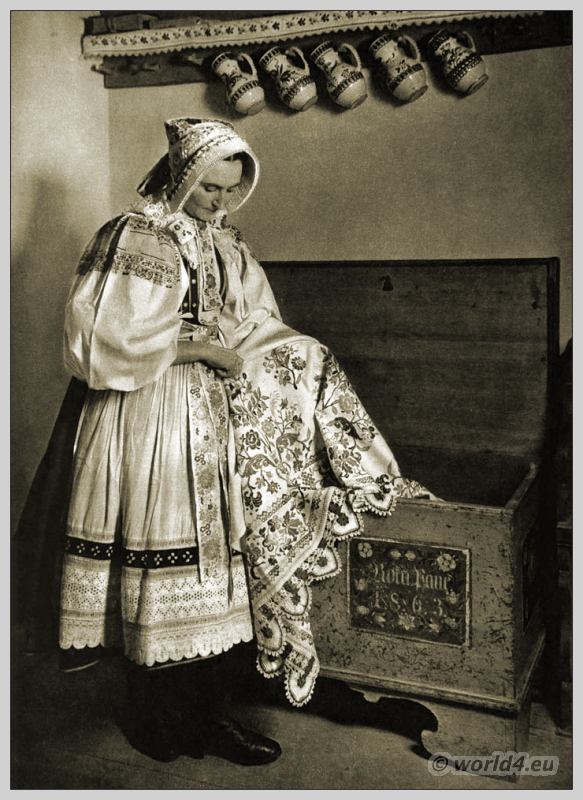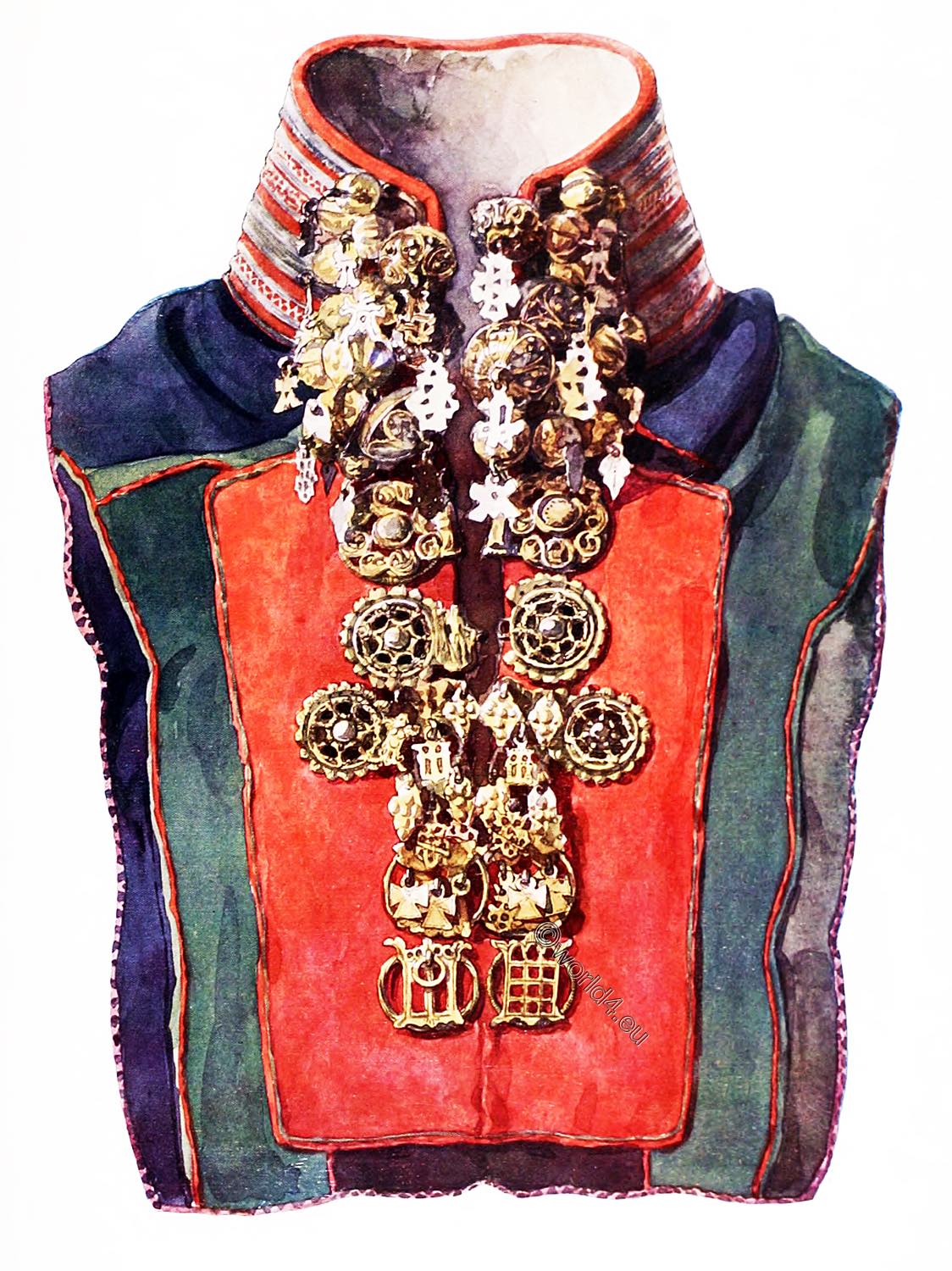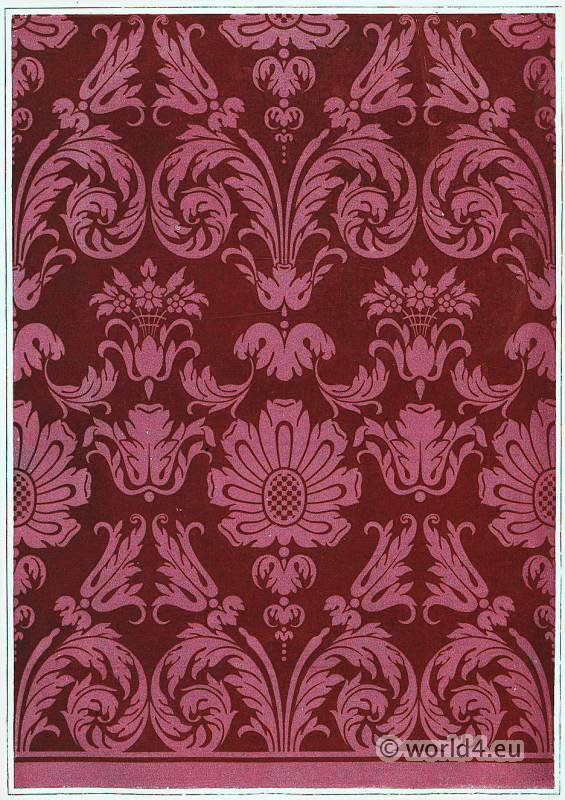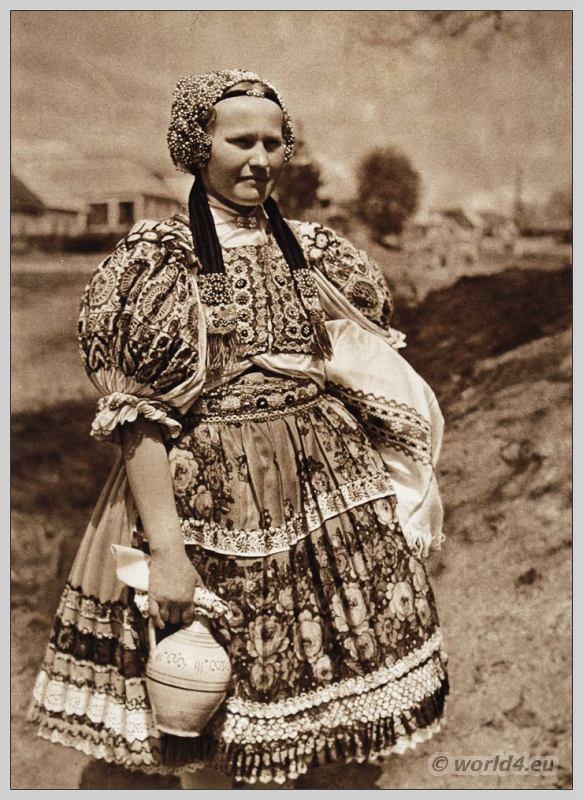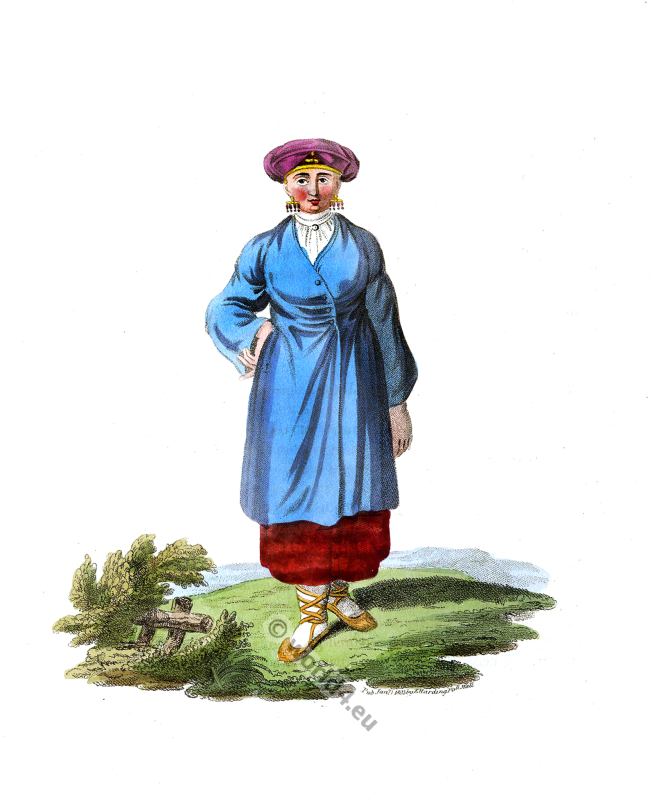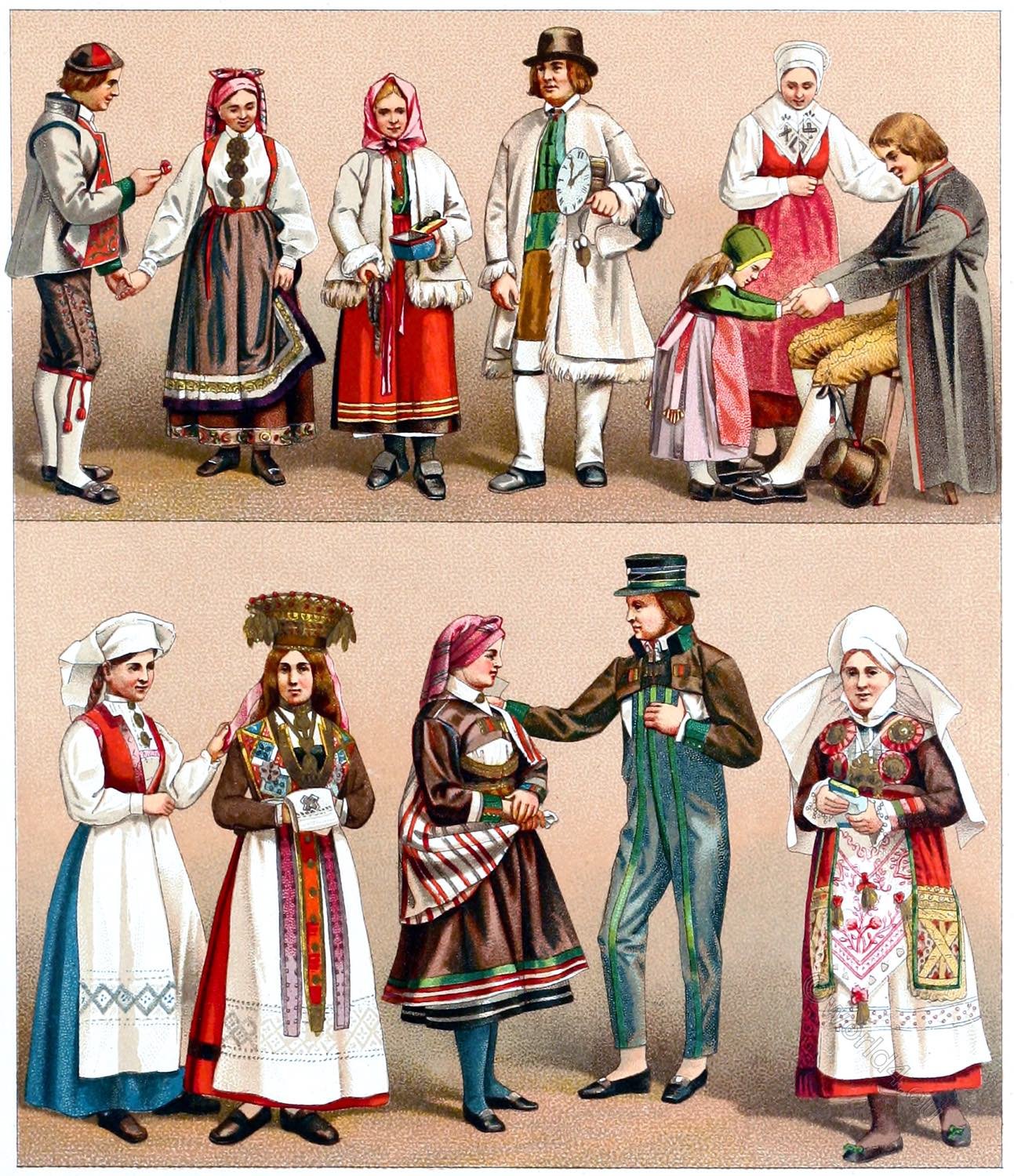Women’s head-dress of linen. Edged in front with white lace. — From 1750—1850. All from Dalarna. — Zorn’s Collections, Mora.
Textile techniques of Swedish peasant art-weavings.
The textile techniques which may be considered as the most characteristic of Swedish peasant art-weavings are as follows (according to v. Waltersdorff: »Swedish Textiles»): —
»Dukagång» (Flushing). The ground web may consist entirely of two-heddled ordinary linen or flaxen warp rep, or entirely of two-heddled wool or of a linen warp and wool weft, in warp rep. When the ground weaving is commenced, certain warp threads across the whole width of the web are picked up in front of the reed batten by means of a flat pointed stick. The stick is then raised on edge in the resulting shed, a broad shed rod is entered behind the heddle shafts of the ground web, the shed rod is, in its turn, raised on edge to guide the introduction of pattern threads. This technique has been used mostly in the south of Sweden. Flushing weavings are at times, of considerable dimensions. The most typical motives are horses, houses and people and they are executed in dark-blue wool on a white linen ground.
»Krabbasnår» (Diagonal flushing). Warp of linen or wool, pattern yarn of wool or flax. The web is turned face downwards. Most of the pattern yarn is on the face of the weaving and, in the south of Sweden, is thick and close, while in the north it is comparatively thinly laid.
»Röllakan» (Low warp tapestry). The many coloured weft is plucked in quite by hand so that the linen warp is entirely covered. The slits caused by the exchange of weft colours are double-locked on the reverse. The reverse faces the weaver during the progress of his work. This somewhat primitive style of weaving has especially been adopted in the south of Sweden.
»Dubbelvävnad» (Double-weaving), an ancient technique known in Sweden since the beginning of the Middle Ages. It consists of two distinct webs which are woven at the some time one above the other, and are joined together wherever the weaver determines to alter their relative positions.
»Flamskvävnad» (High warp tapestry). The technique is closely akin to real tapestry weaving. The coloured weft threads are plucked in between the warp threads by means of pegs to form figures of flowers and other designs. This method was introduced into Sweden by king Gustav Vasa’s Flemish weavers. The Skanian Flemish weavings are renowned for their original pattern and sumptuous colours.
»Rya» (Pile knot weaving). The knotting in this technique directly resembles that of the Smyrna carpet. The rya was originally used as a bed-cover with the pile downwards. Later on, it served only as an adornment for the bed. The rya is considered to be the finest production of the Nordic textile art. Older examples are executed in undyed wool, and in exceedingly simple patterns. As time wore on, gorgeously coloured yarns were employed in the making of the more artistic rya, with sumptuous designs, inspired by brocades and embroideries, or copied from pattern-books.
Source: Swedish Tercentenary. Art Exhibit 1937—1938. Official Catalogue. Printed in Sweden by Nordisk Rotogravyr, Stockholm 1937.
Continuing
Discover more from World4 Costume Culture History
Subscribe to get the latest posts sent to your email.

